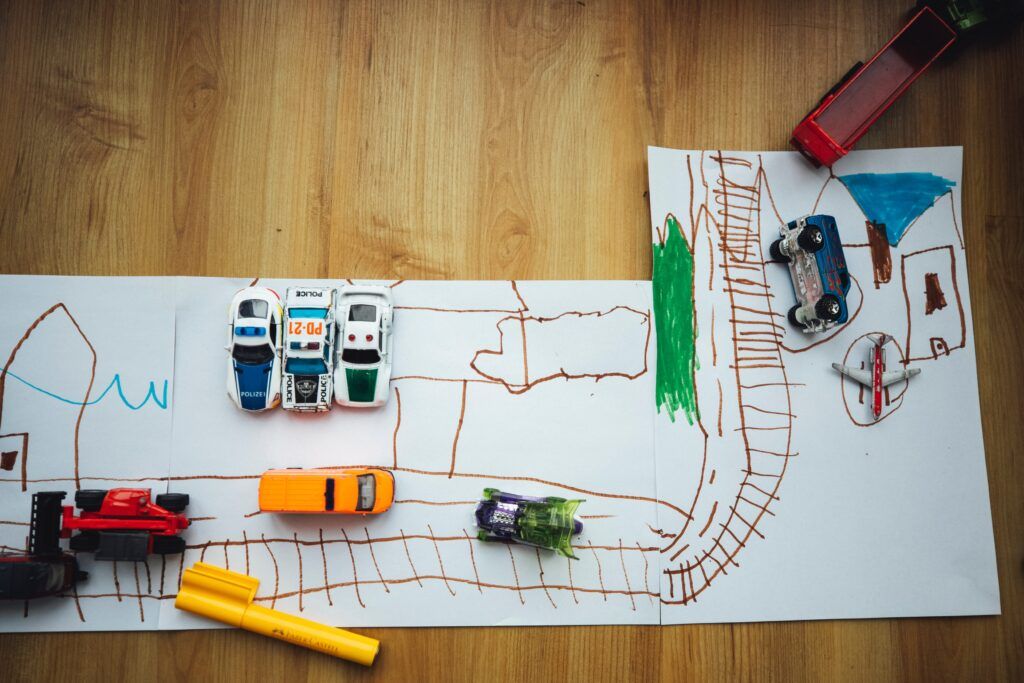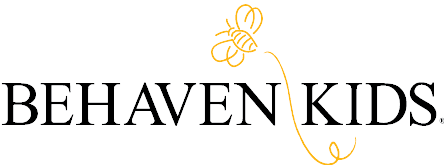
For many families, a child’s ADHD diagnosis is a relief. Though it may sound strange, getting the proper diagnosis can explain certain behaviors or challenges your child displays. Most importantly, an ADHD diagnosis opens the door to various forms of treatment and support that will help your child thrive and overcome various challenges they might have. With all of that said, it’s normal for parents of a child recently diagnosed with ADHD to wonder, “What should I do now?” In this blog post, we will name some of the first steps parents may take when their child gets an ADHD diagnosis. Then, we will cover some important information about ADHD and go over those steps in depth.
My Child Was Diagnosed With ADHD – What Should I Do?
When there’s a new diagnosis of any kind in the family, it’s crucial to gain confidence in your knowledge of the condition and what you can do for your loved one. Here are some of the first things parents can do when their child is diagnosed with ADHD:
- Learn. The first thing that a parent should do when their child is diagnosed with ADHD is to learn about their child’s condition and what it means.
- Seek treatment and support. There are various treatment options for ADHD. Most of the time, people use a combination of them. Additional forms of support (e.g., support at school) can also be helpful, which we will address in this article.
- Use at-home parenting tips. In parent training, you will learn some techniques to use at home with your child. Even before parent training, however, there are some techniques you can use in the home to help your child with ADHD.
- Look for a community. Not every parent chooses to, but if you want a place to connect with others who are going through the same thing (e.g., a recent ADHD diagnosis or parenting a child with ADHD), there are support groups that you can find. For many, these groups are cathartic.
There are ways to support your child with ADHD both in and outside of the home. First, let’s cover some information about ADHD, and then, we’ll discuss treatment options, school-related interventions, and how to find care.
Learn About ADHD
ADHD is considered a chronic neurodevelopmental disorder. Although it was once thought of as a “childhood disorder,” most people find that ADHD symptoms persist into adulthood. Six million kids between 3-17 years old in the United States alone have been diagnosed with ADHD at some point in their life. There are three presentations of ADHD, which include:
- Primarily hyperactive/impulsive ADHD.
- Primarily inattentive ADHD.
- ADHD with a combined presentation.
This is part of why ADHD can look so different from one child to another. These are all diagnosed as ADHD. The “type” or presentation of ADHD is simply a specifier. Regardless of the presentation of ADHD someone has, treatments will be similar or the same. ADHD can be mild, moderate, or severe. The average age of diagnosis varies based on severity and other factors. ADHD can affect virtually every part of a person’s life, ranging from social relationships to work and school, self-esteem, household tasks, and more. That said, many people with ADHD thrive and are highly successful. Obtaining quality professional care for the condition can make a world of difference. Early intervention has proven benefits, so if you’re a parent seeking care for your child, you’re already on the right track.
ADHD Symptoms
The presentation of ADHD a person has is determined based on how many symptoms a person experiences in each category. ADHD symptoms include:
Inattention symptoms
- Difficulty following through on instructions or failure to complete tasks such as homework and chores.
- Trouble sustaining attention during tasks or leisure activities (e.g., reading or conversations with others).
- Seeming as though one isn’t listening when spoken to directly.
- Difficulty organizing activities and tasks.
- Failing to give attention to detail or making mistakes that seem careless.
- Avoidance of or a reluctance to engage in activities that require sustained mental effort (e.g., paperwork and forms, schoolwork, or homework).
- Frequently losing or misplacing necessary objects, such as school supplies, keys, phones, or eyeglasses.
- Being easily and frequently distracted by external stimuli.
- Forgetfulness.
Hyperactivity/impulsivity symptoms
- Fidgeting, tapping, or squirming in one’s seat.
- Climbing or running in situations where it’s inappropriate to do so.
- Leaving one’s seat in scenarios where it is expected that individuals remain seated, such as school.
- Difficulty engaging or taking part in leisure activities quietly.
- Acting as though one’s “driven by a motor” or “always on the go.”
- Frequently interrupting others or intruding on the activities of others.
- Blurting answers out of turn (e.g., before the question has been completed).
- Difficulty with waiting for one’s turn. For example, when in line.
- Excessive talking.
For an individual aged 17 or below to receive an ADHD diagnosis, they must display at least six or more symptoms of inattention or hyperactivity/impulsivity. On the other hand, those aged 17 or above must only display five symptoms of inattention or hyperactivity. If someone experiences this number of symptoms in the inattention category only, they’d have primarily inattentive ADHD. This can be harder to detect, but it can affect a person’s life just as much, albeit in different ways at times. Following suit, if someone experiences this number of symptoms in the hyperactivity/impulsivity category only, they’d have primarily hyperactive/impulsive ADHD. If a person displays a significant number of symptoms in both, they’d have a combined presentation.
Even if someone’s diagnosed later in life, symptoms must have started in childhood. Furthermore, for someone to receive an ADHD diagnosis, symptoms must not be better attributed to another cause. It is possible to live with more than one condition, however, and this is actually very common among people with ADHD.
Treatment and Support for ADHD
Most often, a person with ADHD will benefit most from a combination of different treatments. For example, both medication and therapy rather than one or the other. This is true for many disorders. Here are some of the most prevalent treatment recommendations for ADHD.
Parent training in behavior therapy
The CDC recommends that parents of kids under the age of 12 with an ADHD diagnosis pursue parent training in behavior therapy. Parent training is often relatively short-term, and it teaches parents tools to use at home with their child who has ADHD. When you pursue parent training in behavior therapy, you will:
- Learn skills and techniques to use with your child at home.
- Receive assignments or activities to practice with your child at home.
- Meet regularly to discuss progress and modify your family’s goals or treatment plan as needed.
Note that parent training in behavior therapy may also be called parent training in behavior management, behavioral parent training, or simply parent training. Common techniques parents might use at home include but aren’t limited to positive reinforcement, routines, reward systems or charts, allowing adequate time for physical activity (which is shown to help individuals with ADHD), and more. Every child is different, and the therapist you work with will keep the unique needs of your child in mind.
Medication
Medication is the first recommended line of treatment for individuals with ADHD aged six and over. It can be used for kids with ADHD as young as three years old, however, especially if parent training is not enough to curb symptoms. ADHD medication is considered effective and safe for those who live with ADHD. Central nervous system (CNS) stimulants are the most common medications used for those with ADHD, and they are effective for 70-80% of kids with ADHD who take them. That said, CNS stimulants aren’t the only medications for those with ADHD, and if these aren’t the right fit for your child, there are other options. The correct medication regimen can improve symptoms as well as one’s quality of life significantly.
Therapy
Behavior therapy can be used for people of all ages. The therapeutic process will be tailored to your child’s age group. For example, younger children often engage in play therapy. Therapy for ADHD can help with:
- ADHD symptoms, including both inattention and hyperactivity/impulsivity symptoms
- Emotional regulation. Emotional regulation can be of concern for people with ADHD, regardless of age.
- Social and interpersonal skills. Many people with ADHD struggle with social skills, difficulty making or keeping friends, and so on. Therapy can mitigate this and provide tools that promote positive interactions with peers.
- Self-esteem. ADHD is correlated with low self-esteem and the development of other disorders, like depression and anxiety. If these things are of concern, a therapist can address them and help your child improve.
For kids diagnosed with another condition alongside ADHD, such as Autism Spectrum Disorder (ASD), anxiety, depression, bipolar and related disorders, or PTSD, other treatments might be utilized or recommended in addition to ADHD treatment. That way, the full spectrum of their needs will be addressed. Your child’s needs will likely change as they grow older, which means that their treatment plan will change as well.
What about for parents? As far as support groups go, if you are interested in a support group for parents of kids with ADHD, you may be able to find one online or in person. Support groups are nearly always free of cost, and they’re a great place to exchange advice or relate to others. Individual therapy can be beneficial for parents, too, as it provides a safe space to talk and work through any stressors you face.
ADHD and School
ADHD is a protected disability by law. Symptoms such as difficulty focusing, trouble remaining seated, issues with memory, and excessive talking or blurting out answers can all impede on school and classroom behavior.
To help them succeed, many children in K-12 education who have ADHD get what’s called a 504 plan or an individualized education program (IEP). With an IEP or 504 plan, children can get accommodations such as more time on tests, additional help staying on task, time to move around, extra breaks, and so on. A 504 plan is more involved and is often the recommended or ideal option. Special education services are free of cost; make sure that you know your rights and understand what’s available to you.
Parent involvement matters. To support your child with ADHD in school, communicate with their teachers about ADHD and anything unique to your child that may affect classroom behavior or success in school.
For kids who need it, tutoring can be advantageous. If you suspect a learning disability, make sure to get your child testing sooner rather than later. Just as those with ADHD are more likely to experience anxiety, depression, and insomnia, kids with ADHD are substantially more likely to have a learning disability like dyscalculia, dysgraphia, or dyslexia. This is something to keep in mind.
Conclusion
When a child receives a new diagnosis of any kind, parents often wonder what to do. If your child has ADHD, you aren’t alone, and there are many benefits to getting the right diagnosis. The first step is to learn about ADHD and help your child get the care they need. If you feel stuck at any point in time, talk with their pediatrician or an ADHD specialist who can help. A professional will be able to give you the individualized guidance and advice that you and your child deserve.
To set your child up for care with us, view the Admissions tab or contact Behaven Kids here. You can also learn about our programs and read testimonials on our website. Regardless of where you seek a provider to work with, your family deserves to get the care they need.
